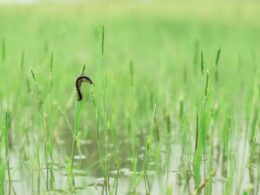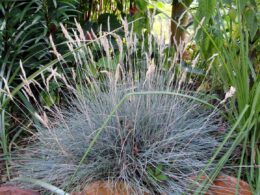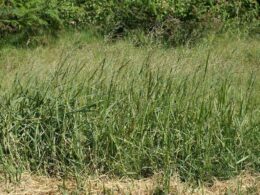What Is Beach Grass?
Beach grass (genus Ammophila) is a common name for several types of grasses that grow near beaches. Beach grass is a member of the Poaceae family, which includes both grasses and grains. There are more than 12,000 species of Poaceae, and beach grass is just one of many that can be found growing near the coastal areas. The most common type of beach grass is Elymus mollis, which is also known as American dune grass or Ammophila breviligulata. Other types of beach grasses include: Ammophila Arenaria which is native to temperate coasts of Europe.
Beachgrass Appearance
The blades of beach grass are often stiff and slightly hairy, and they range in color from green to blue-green. Some types of beach grass also have flowers that bloom in the summer. They are also tolerant to saline environment. There are many types of beach grass, each with its own distinct appearance. Some varieties, such as sea oats, have long slender leaves that sway in the wind. Others, like dune grass, have short, wide leaves that form a dense mat.
Color
Beach grasses also vary in color, from the bright green of sea oats to the deep purple of dune grass. No matter what their appearance, all beach grasses share one common trait: they are incredibly tough and resilient. They are able to withstand intense sunlight, high winds, and salty environment. This enables them to thrive in the harsh conditions found on beaches and sand dunes. As a result, beach grasses play an important role in stabilizing these environments and providing habitat for wildlife.
Dune Grass Distribution and Habitat
Beach grass is a common sight along coastlines around the world. Beach grass typically grows in clumps or tufts, with each clump containing several individual plants. A Beach Grass native to Eastern North America is Ammophila breviligulata, commonly known as American beach grass. It can be found in the shores of the Great Lakes and along the Atlantic coast.
American Beach Grass (Ammophila Breviligulata)
American beachgrass, also known as Ammophila breviligulata, is a highly-adaptable plant species native to the coastal regions of the eastern United States. This resilient grass has remarkable tolerance for harsh environmental conditions, such as high winds and shifting sands, and it can grow up to 1 to 3 feet in height. The grass spreads rapidly, even 6 to 10 feet annually through rhizomes, and one clump can produce as many as 100 stems per year. The rhizomes may spread new shoots along the dune up to 43 away from the plant, making it a very hardy and resilient grass.
Invasive Species of Beach Grasses
European Beach grass grows along the Western coastline of the United States and since it is not a native plant of the area, it is considered invasive. European beachgrass tends to thrive in areas with direct sunlight, sandy soils, and an ample water supply. It generally takes root in coastal regions such as dunes and beaches, where it can quickly crowd out native flora. Due to its tendency to spread easily through rhizomes (underground stems), European beachgrass is incredibly difficult to eradicate once it has taken hold in an area.
The Importance of Beach Grasses
One of the most important components of any beach ecosystem is the beach grass that lines its shores. Beach grasses have many important functions in a beach environment. First, they provide habitat and food for many types of insects and small animals. Second, they help to prevent erosion by holding sand in place with strong roots and dense foliage. Finally, they help to stabilize coastal ecosystems by providing shelter for other plants and animals that are important to maintaining a healthy ecosystem balance.
Beach Grass Requirements for Growing
Beach grass is a unique plant that requires specific conditions in order to thrive. In particular, it requires full sun exposure with minimal shade and very sandy, well-drained soil. Beach grass also prefers high temperatures and occasional salt spray. Because of these particular requirements, beach grass is often found growing near the ocean or other coastal environments, where it receives adequate sunlight and moisture.



















